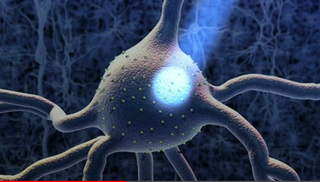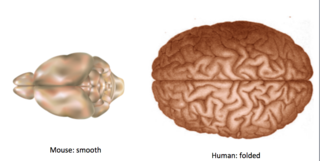Neuroscience
Where Neuroscience is Making the Impossible, Possible
Glimpse a revolutionary future enabled by neuroscience
Posted July 9, 2016
Recently, while preparing to deliver a TED talk—"What Will Be the Next Big Scientific Breakthrough?"—I thought a lot about the impossible.
Once, human flight was impossible. Instant communication anywhere, anytime was impossible. Leaving Earth was impossible. Seeing farther than the naked eye was impossible. Scientific revolutions have turned a long list of impossibilities into everyday realities. And science is far from finished.
Nowhere is this more true than with neuroscience.
Thanks to functional magnetic resonance imaging (fMRI) we can already see living brains think, we can help relieve Parkinson’s tremors with the flip of a switch via brain implants, and we can beam thoughts instantly across the planet from one person to another via sensitive scalp probes and superconducting brain stimulators.
Where is neuroscience poised to elevate the art of the possible and change our lives next? Following are three of the most tantalizing possibilities.
Some seem far-fetched or absurd, but that is always true of revolutionary advances just before they happen. Physicians thought Ignaz Semelweiss was insane for believing microbes caused disease. Ditto for Wegener, who postulated that the continents drift, and for Barry Marshall, who argued that the bug h pylori causes ulcers. The list of "insane" ideas that ultimately proved correct goes on and on: A meteor wiped out the dinosaurs, humans descended from primitive species, Earth revolves around the sun.
Buckle your seat belts for a wild ride through a (possibly) revolutionary future, brought to you by modern neuroscience. Some of this work may fizzle out, but some will dynamite our concept of what is impossible.
- Implanting and triggering false memories.
MIT neuroscientists Liu and Ramirez (see TED talk) injected mice with nanoscopic optical switches that are absorbed by neurons in the hippocampus while the neurons are forming new memories. The MIT scientists then trained these mice to fear a particular environment through mild shocks. Using implanted lasers to turn on optical switches can excite the same hippocampal neurons that recently formed the "fear" memories. Liu and Ramirez got mice to “replay” fear memories in new environments that the rodents had no reason to fear. This was an astonishing accomplishment at multiple levels: Tagging and identifying nerve cells that hold specific memories was once thought to be impossible. Selectively activating such a small population of neurons to replay the memories was believed to be even more improbable.
 Source: Ed Boyden MIT
Source: Ed Boyden MIT

Why should we care?
If this technique were to work in humans, it might be possible to create and stimulate positive memories to overwrite bad memories, such as those of PTSD sufferers. Or, as Steve Ramirez himself has speculated, perhaps we can someday erase the pain of bad romances!
- Bring the dead back to life.
Recent advances in stimulating growth of new brain cells using stem cell implants, genetic switches, and other tricks raise the possibility of reviving patients who are clinically “brain dead.” Through the “ReAnima” project, biotech companies BioQuark and Revita Life Sciences received approval to attempt to revive 20 patients declared brain dead using a combination of peptides and mRNA that stimulate new nerve growth, stem cell implants, optical and electromagnetic brain stimulation, and other techniques to kickstart stalled brains. Finally, cryopreservation of brain tissue shows some promise in cats, rodents, and other mammalian species. For example, cat brains frozen for years, then carefully thawed, exhibit measurable neural activity. Perhaps someday even after brains “die” they can be frozen and later brought back to some semblance of life.
Why should we care?
Apart from giving new hope to deep coma victims and their families, the combination of neural regeneration and revitalization techniques could help treat Alzheimer's, Parkinson's, and stroke patients. The methods may even restore healthy “older” brains to youthful vigor. And the possibility that we might succumb to an incurable disease, be frozen or preserved some other way, and later be resurrected when a disease becomes curable, cannot be completely ruled out. It sounds crazy—and probably is—but based on the cryo-neuroscience, I would never say such a thing is impossible.
- Making animals as smart as humans.
Rash and colleagues at Yale University discovered that they could make embryonic mouse brains more human-like by delivering fibroblast growth factor to the animals' developing brains. Rash succeeded in inducing mice brains to develop gyri and sulci typical of more "advanced" mammals such as cats, monkeys, and humans. As shown in the photo, mouse brains are normally smooth, lacking the complex folds that allow human brains to pack hundreds of billions of neurons into a small volume. But Rash induced “gyrification” in mouse brains that gave these normally unfolded brains folds. Other researchers have achieved similar results by activating the Trnp1 gene in mice (a gene shared with humans), permitting embryonic rodent brains to develop and grow longer than they normally would.
 Source: looie 496/DBCLS CC0
Source: looie 496/DBCLS CC0Why should we care?

I am not eager to have a pet mouse or dog as smart—or smarter—than I am. I like dogs who are loving, uncomplicated, and not prone to argue with me about when to take a walk. But if the early promise of “induced gyrification” pans out, someone is bound to create smarter animals to perform tasks that were once the sole province of humans. This could reduce payroll costs and employee insurance costs—unless the newly intelligent creatures decide to unionize! Perhaps we will need to produce smarter humans just to cope with the smarter animals we create. But if increased gyrification produces smarter animals, why not smarter humans? Countries wishing to deploy smarter soldiers, or employ smarter scientists might be tempted to turbocharge brains.
If all three of these impossible neuroscience advances make the impossible possible, what will our future hold?
- Could we learn new things simply by going to a memory salon for treatments?
- Could we regrow lost brain tissue and recover from “incurable” neurodegenerative diseases?
- Could we come back to life?
- Could we discuss Proust and Goethe with our Labrador retriever and seek his opinion on our troubled relationships?
- ... and could we ask this same canine where he believes science will next make the impossible possible? Possibly!
For more fun with neuroscience, learn more about my new book, Brain Candy.
And, to discover the far horizon that lives inside each of us, check out www.drhaseltine.com
References
- https://www.ted.com/talks/steve_ramirez_and_xu_liu_a_mouse_a_laser_beam…
- Philos Trans R Soc Lond B Biol Sci. 2014 Jan 5; 369(1633): 20130142.
- Xu Liu,† Steve Ramirez,† and Susumu Tonegawa, Inception of a false memory by optogenetic manipulation of a hippocampal memory engram
- Negishi T, Ishii Y, Kawamura S, Kuroda Y, Yoshikawa Y. Cryopreservation of brain tissue for primary culture. Exp Anim. 2002;51:383–390. doi: 10.1538/expanim.51.383
- http://science.sciencemag.org/content/341/6144/387
- http://www.nicolelislab.net/?p=369
- http://www.nicolelislab.net/wp-content/uploads/2013/02/SREP-12-04012-5e…
- Trnp1 Regulates Expansion and Folding of the Mammalian Cerebral Cortex by Control of Radial Glial Fate Ronny Stahl,Tessa Walcher, Camino De Juan Romero,5 Gregor Alexander Pilz,3 Silvia Cappello,3 Martin Irmhttp://www.cell.com/abstract/S0092-8674(13)00349-8
- http://www.jneurosci.org/content/33/26/10802.full
- http://www.scientificamerican.com/article/repairing-the-damaged-spinal-…
- http://www.mayo.edu/research/departments-divisions/department-neurology…
- http://www.medicaldaily.com/smart-drug-modafinil-improves-memory-and-co…
- http://www.alternet.org/personal-health/can-pill-make-you-smarter-brave…
- http://www.smithsonianmag.com/innovation/meet-two-scientists-who-implan…
- https://www.theguardian.com/science/2014/nov/20/brain-damage-nerve-cell…
- http://www.mayo.edu/research/centers-programs/center-regenerative-medic…
- http://www.telegraph.co.uk/science/2016/05/03/dead-could-be-brought-bac…
- http://www.alcor.org/Library/html/caseforcryonics.html
- Trnp1 Regulates Expansion and Folding of the Mammalian Cerebral Cortex by Control of Radial Glial Fate, Ronny Stahl et al
- Cytotechnology. 2015 May; 67(3): 419–426.
- Freshly frozen E18 rat cortical cells can generate functional neural networks after standard cryopreservation and thawing proceduresKim Quasthoff, Stefano Ferrea, Wiebke Fleischer, Stephan Theiss, Alfons Schnitzler, Marcel Dihné, and Janine Walter [Description: orresponding author]
Facebook image: Mikhail Starodubov/Shutterstock


